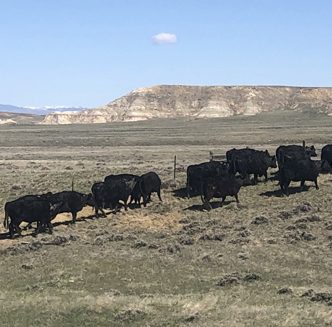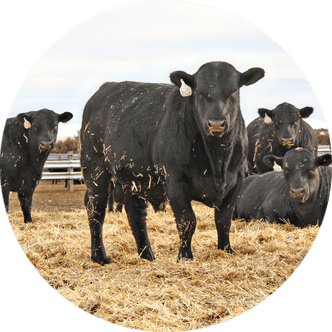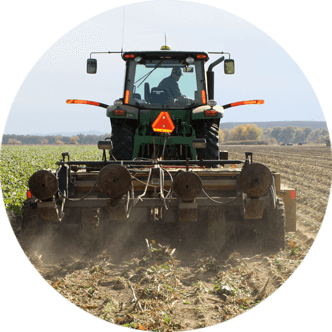Summer Wildfire Forecast: National Interagency Fire Center predicts increased fire potential for Rocky Mountain Region throughout the month of July
As temperatures climb, fuels continue to dry out and afternoon thunderstorms start to roll in, wildfire officials warn July could bring increased potential for wildfire activity across the Rocky Mountain West.
According to the National Interagency Fire Center (NIFC) of Boise, Idaho, a combination of below-average spring precipitation, persistent drought conditions and a forecast for above-normal temperatures is setting the stage for a potentially volatile month, especially in Colorado and Wyoming.
Regional drought conditions
On July 1, NIFC issued the National Significant Wildland Fire Potential Outlook, which predicts fire activity across the U.S. for July through October using cumulative forecasts from the National Predictive Services Unit and 10 individual Geographic Area Predictive Service units.
The report notes increased temperatures and limited precipitation west of the Continental Divide, with cooler temperatures, more precipitation and some improvements in drought conditions east of the Continental Divide.
Specifically, Colorado’s Western Slope and western Wyoming averaged five degrees Fahrenheit above normal. The western portion of the Rocky Mountain Region also saw scarce precipitation, with some areas receiving less than 10 percent of their normal June averages.
On the other hand, June brought above normal precipitation for Colorado’s Front Range and the San Juan Mountains, as well as above normal rainfall scattered throughout eastern Wyoming, Nebraska and Kansas, which kept temperatures near to below average in these areas.
“Drought conditions overall remained unchanged or improved in eastern Wyoming and eastern Colorado into Nebraska and Kansas,” reports NIFC. “Northwest Colorado and southwest Wyoming, due to the hot temperatures and lack of rain, continued to see worsening drought throughout the month.”
Rocky Mountain wildfire potential
While increased showers and thunderstorms have led to some green up across the Central Plains and the eastern plains of Colorado and Wyoming, it is also increasing fine fuel load due to abundant growth.
According to NIFC’s reports, in areas of both Wyoming and Colorado, west of the Continental Divide, fine fuels at lower elevations have already cured, while those at mid- to higher-elevations are generally greener and have been impeding the spread of fire.
“The larger, dead, woody fuel classes are carrying fire due to the longer-term lack of moisture,” NIFC points out.
Additionally, the NIFC predicts temperatures will remain above normal from July through October, and – with the exception of southwest Colorado which will likely receive normal precipitation – the Rocky Mountain Region is also set to see below normal moisture for the rest of July.
The report notes, “There will still be a gradual increase in showers and thunderstorms as the monsoon starts to develop in the southwestern U.S. The monsoon is not looking as active as it once did, with activity being more sporadic. The initial push from each round of monsoonal may result in increased dry lightning potential on the West Slope. The remainder of the Rocky Mountain Region, through October, will remain below normal for precipitation.”
Therefore, with hot dry conditions expected across the West Slope, northwest Colorado and southwest Wyoming, NIFC forecasts increased significant fire potential in July while the rest of the area will continue to see normal fire potential.
Then, when moving into August and September, the agency believes the area of highest concern will be northeast Wyoming, which will likely see continued drought conditions and well below normal precipitation.
However, NIFC notes by October, the entire area’s fire potential will likely return to normal.
Nationwide predictions
At the national scale, NIFC says fire activity increased across the U.S. during the month of June, with the most notable increases in activity occurring in Alaska, the Great Basin and the Southwest.
“Activity increased more rapidly in the latter half of the month in the West, with the National Preparedness Level increasing to a three – on a scale of one to five – on June 21 due to large fires burning in several geographic areas,” the report reads. “Total acres burned in the month of June was below the 10-year average at nearly 90 percent, with an above average tally of wildfires of 129 percent.”
Additionally, NIFC forecasts above normal fire potential throughout the majority of the Northwest and for much of central and southern California through September.
Above normal fire potential is also forecast for most of Oklahoma and central and northern Texas in August, before returning to normal in September and October, as well as in northwest Minnesota from August through October.
In July, above normal fire potential is forecast for portions of the southern Great Basin, northwest Colorado and southwest Wyoming, as well as the U.S. Caribbean Islands, before returning to normal in August. And, the lee sides of Hawaii will have above normal significant fire potential for all four months.
Hannah Bugas is the managing editor of the Wyoming Livestock Roundup. Send comments on this article to roundup@wylr.net.





